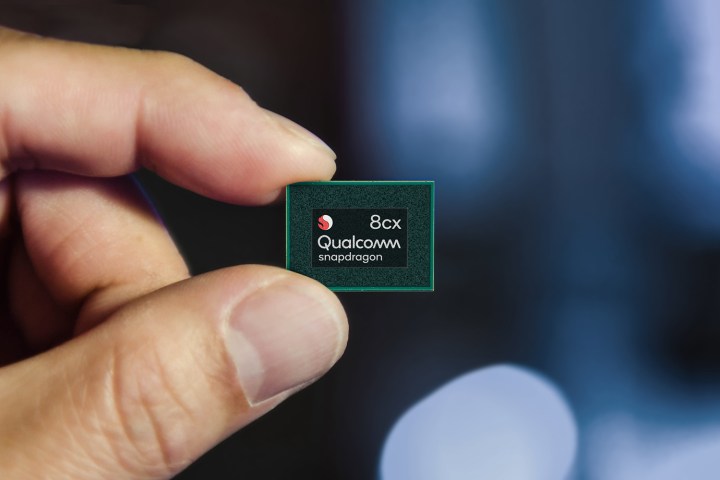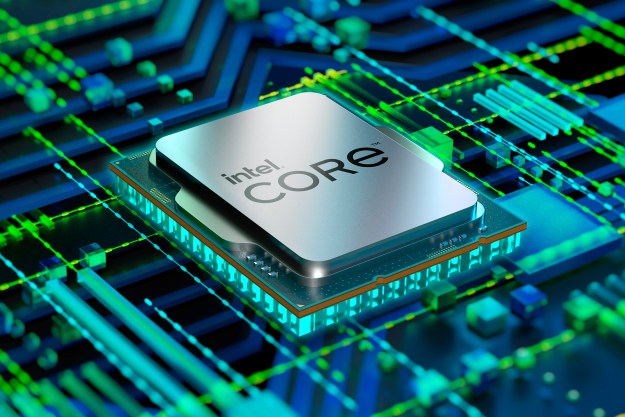Intel is under assault. Its long-running tenure as the king of computing CPUs is being shaken at its foundation with the latest generation CPUs from AMD on desktop and mobile.
AMD isn’t the only competition, though. Qualcomm is also posturing up to Intel’s mobile dominance with some intriguing chips of its own. Its laptop Snapdragon chips use the clever big/little core design of its smartphone system on chip (SoC) designs, but with a little more processing and graphical oomph. The 8cx is the latest attempt to topple Intel from its processing throne.
Where previous Always Connected Windows laptops powered by Snapdragon 835 and 850 chips have seen mixed results, perhaps the new Snapdragon 8cx can prove more capable. Here’s how it stacks up against Intel’s midrange Core i5 CPUs.
You can check our CPU guide if you’re interested in further information.
CPU performance

The Snapdragon 8cx sports Qualcomm’s Kryo 495 CPU cores. It has eight of them to work with, four of which are lower-power Silver cores running at 1.8GHz, while the others are Gold cores running at 2.84GHz. Intel’s Core i5 mobile CPUs use a more traditional design with four general-purpose cores, but some have support for hyperthreading, meaning that they can handle up to eight threads at once.
The best of Intel’s eighth-generation Whiskey Lake Core i5 CPUs operate at 1.6GHz but can turbo boost up to 4.1GHz on a single core when required or up to 3.7GHz across all four cores simultaneously. Its 10th-gen Ice Lake CPUs have a lower clock speed between 0.7GHz and 1.2GHz base clock, but they turbo up to 3.7GHz on one core and 3.3Ghz across all of them simultaneously. Its 10th-gen Comet Lake CPUs clock higher still, reaching up to 4.4GHz in some configurations.
Ice Lake CPUs are based on a 10nm process node, which helps propel Ice Lake CPUs ahead of 14nm Whiskey Lake chips, even with a lower boost clock. Comet Lake CPUs are also based on a 14nm process but still tend to be faster than Ice Lake chips, even if they aren’t as efficient. Qualcomm’s 8cx is based on a more refined 7nm process — the same one that has seen AMD make big gains with its desktop chips.
There are plenty of reviews for Core i5-equipped laptops and 2-in-1s — you can read about many of them here — but there are far fewer devices in the wild that support the 8cx in mid-2020. Still, there are some, and they have made some impressive results. We got our hands on the first of the bunch, the Samsung Galaxy Book S, in August 2019 and really liked it. Reviews of the finished product were strong too, claiming that the 8cx was a great improvement over previous-generation laptop SoCs from Qualcomm. It offered good performance and great battery life.
What it didn’t offer, though, was Core i5 beating performance. The 8cx struggles with intensive web browsing (itself not exactly the most strenuous of tasks). In our review of the 8cx-equipped Lenovo Flex 5G, we found it just about capable enough to compete with slower dual-core i3 Intel CPUs, and even select Core i5s in multi-threaded tasks. Single-threaded tasks saw it severely hamstrung by its lower clock speed, however.
Another comparison worth making, is with the Microsoft Surface Pro X’s SQ1 chip, which is a modified Snapdragon 8cx. In some reviews, that CPU falls behind Intel’s Core i5 and i7 processors in the Surface Pro 7 and Surface Laptop 3, further highlighting the 8cx’s good, but not good enough, performance.
Graphics

Intel’s onboard graphics, typically its HD and UHD variants, have never been known as gaming powerhouses. They don’t hold a candle to entry-level graphics cards like the Nvidia GTX 1650 and 1650 Super, even if they do enable some very low-level gaming. That all changed with Ice Lake, which proved to be far more capable at enabling decent frame rates at 1080p resolution in many popular e-sports games, and even some modest FPS in older AAA games, like GTA V.
At the time of its debut, the Adreno 680 GPU core was said to be the fastest GPU Qualcomm has ever produced, with up to twice the performance and 60% greater power efficiency than the Snapdragon 850. It also supports the latest DirectX12 API.
In graphics tests performed at Computex 2019 against the Intel 8250U with its onboard Intel UHD 620 graphics core, the Qualcomm Snapdragon 8cx performed favorably. In the PCMark 10 Night Raid benchmark it achieved a graphics score as high as 6,266, while the Intel chip was only able to achieve a score of 5,831. That’s a more than 20% uplift in performance for the Snapdragon SoC and equates to a difference of 29 fps for the Intel chip (at best), versus the Snapdragon’s 37 fps.
While that does give the Snapdragon CPU a lead against the Intel HD graphics onboard the Comet Lake 10th-generation CPUs — chips that are often paired with dedicated graphics cards — it’s not much of a comparison for the Ice Lake Core i5 processors and their onboard GPUs, which are far more capable.
App support

One of the concerns with Microsoft’s Always Connected PC style is the lack of native applications for the Qualcomm hardware under the hood. Although the two companies have built emulation that allows x86 applications to run on the platforms, that’s not ideal, as it does require some processing power to perform the translation.
The Electron cross-platform app development system is integrated with Windows 10, making it easier than ever for developers to port their programs to run on Arm hardware just as well as Intel. That brings popular apps like Slack, Discord, Microsoft Teams, and Spotify into the fold of native Arm applications, which could lead to a great increase in performance on Qualcomm chips over the long term. The Unity development engine is also consistently improving support for, and performance on, Arm hardware, like the Snapdragon 8cx.
That said, when we tested the Lenovo Flex 5G with its Snapdragon 8cx, we found it incredibly frustrating how often Windows applications just wouldn’t run well — or run at all — on the Qualcomm SoC. Emulation helps, and this problem may become less of one over time, but as of mid-2020, it’s still a concern.
Cost and efficiency
The big selling points of the existing Always Connected line of products are efficiency and connectivity. Qualcomm has talked up efficiency gains for the Snapdragon 8cx, suggesting it could even deliver multi-day battery life in some products. That would be an improvement even upon the extensive battery life seen in solid entries like the HP Envy x2 and the Surface Book 2.
The Lenovo Flex 5G held that promise in our testing, breaking all of our battery performance records and lasting an impressive 28 hours in our video loop test on a single charge. The web test saw the Flex 5G handle over 17 hours straight, almost two hours more than the Surface Book 2.
Battery life is an area where the Flex 5G really shines. While the 8cx isn’t perfect in all areas, this is one of many tasks it handles well.
8cx intrigue can’t trump pedigree and performance

Keeping up with all of the advances Intel has been making in mobile computing can be challenging. Without a lot of prior knowledge, it can be difficult to decide between a Qualcomm 8cx or a Core i5 laptop.
The Qualcomm 8cx has excellent battery life and fantastic graphics, but there’s area for improvement. While it has great app support, some users find the CPU and GPU capabilities and performance underwhelming.
Qualcomm’s 8cx has a lot of potential, and the 8cx Plus is already promising to deliver more. With that in mind, Intel’s latest Core i5s are the best option on the market right now.
Editors' Recommendations
- I tested Intel’s Core i5-14600K against its cheaper sibling. Don’t waste your money
- Intel Core i5 vs. i7: Which CPU is right for you in 2023?
- After 15 years, Intel may be killing the Core i5 and Core i7
- Intel’s Core i9-13900KS hits 6GHz out of the box, but there’s a catch
- Intel Core i9-13900K vs. Core i9-12900K: Is it worth the upgrade?




